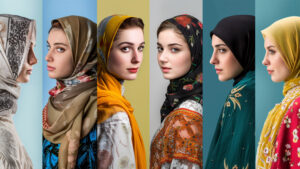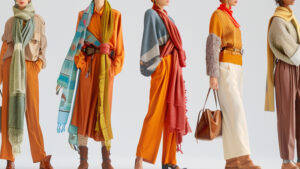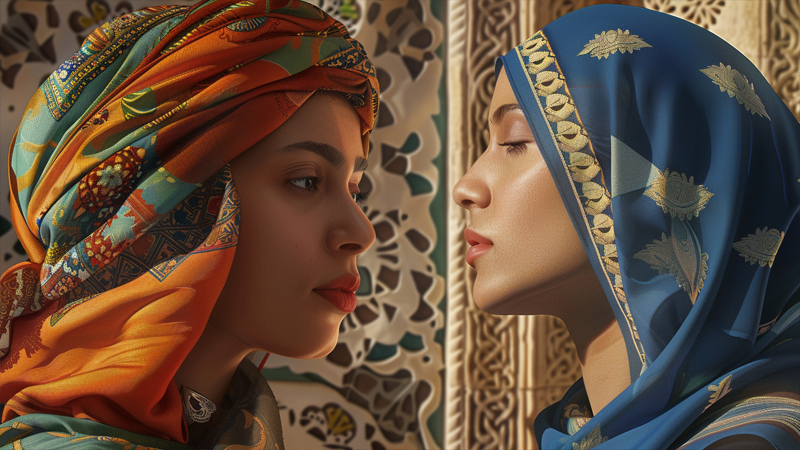
Turbans and hijabs fascinate me, each carrying unique heritage and meaning. Let’s explore how they differ.
Turbans and hijabs differ in origin, purpose, and style, reflecting distinct cultural and religious practices. Understanding their backgrounds can clarify these head coverings' diverse roles.
They’re more than mere accessories.
How are turbans and hijabs defined and culturally originated?
Turbans1 and hijabs2 grew from different roots and beliefs.
Turbans originate in regions like South Asia and the Middle East, while hijabs link closely to Islamic traditions. Each reflects its own cultural narrative.
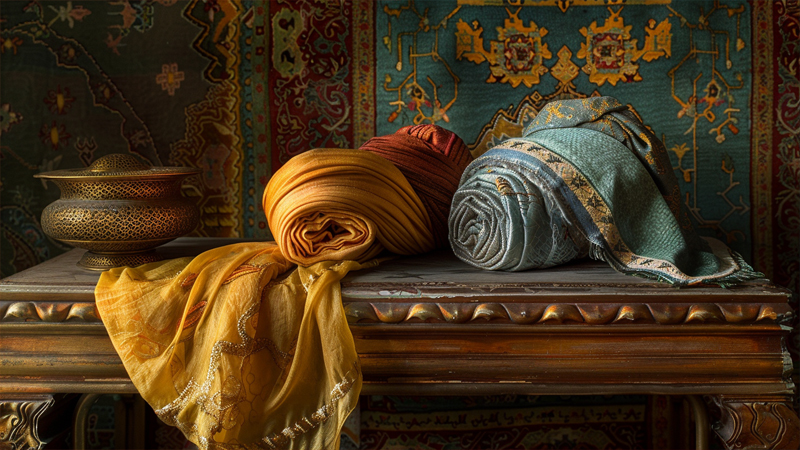
I remember visiting a friend’s home where her grandfather wore a bright turban to a family gathering. He told stories of his Punjabi roots3, how his turban was more than cloth—it was a crown symbolizing dignity and community. Meanwhile, my friend’s mother wore a hijab, describing it as a sign of modesty and devotion. Listening to them helped me see how both head coverings emerged from deep histories.
Turbans often trace back to regions such as India, Pakistan, and parts of Africa. They serve different purposes for different faiths or cultural identities. Sikhs4, for example, keep uncut hair as part of their spiritual practice, and the turban protects and respects that hair. On the other hand, hijabs have a strong link to Islamic faith. Rooted in an emphasis on modesty, many Muslim women choose to wear it as part of their religious expression5.
You can find variations across communities. Some turbans are elaborate and tall, like those worn by Rajasthani men, while others might be shorter or styled differently in East Africa. Hijabs also change by region—think of the colorful, patterned wraps in Southeast Asia6 or simpler black hijabs in some Middle Eastern countries. Each adaptation holds a unique cultural story.
The origin tales are vast, but they often converge on a single idea: these coverings aren’t random garments. They carry identity, reverence, and history, woven into everyday life and special occasions alike.
What are the styling and coverage differences between turbans and hijabs?
Different techniques and coverage needs shape how turbans and hijabs are worn.
Turbans wrap and secure hair differently from hijabs, which specifically frame the head and neck for modesty. Styling reflects tradition and personal choice.
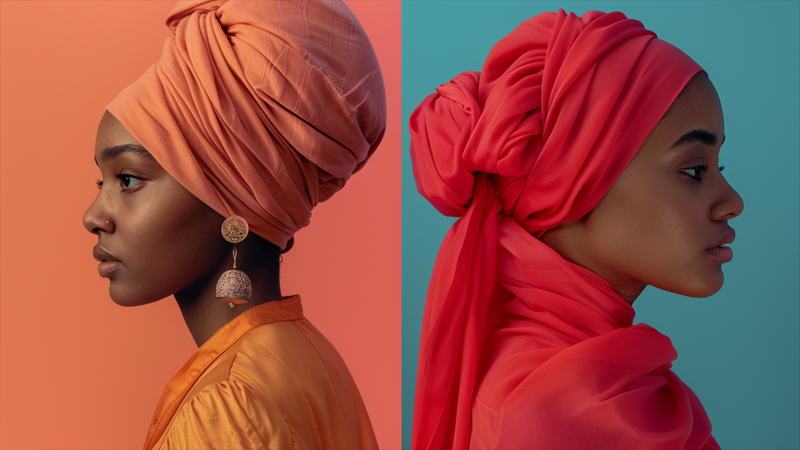
Years ago, I tried tying a friend’s turban style, and I recall being amazed at the precise folds needed to keep it in place. Meanwhile, I’ve watched my cousin’s graceful hijab tutorials on social media—showing pins, underscarves, and layering techniques to cover her hair fully.
Turbans tend to wrap around the head, gathering hair on top or under multiple folds. Hijabs often drape around the head and chest, fully covering hair, ears, and neck. Some people use an undercap to keep everything secure. Others style their hijab with neat pleats or decorative pins. Turbans, depending on faith or culture, can also have distinctive shapes: a Nihang Sikh turban7 may be incredibly tall, while a simple African turban might have a bold knot at the front.
Here’s a quick look:
| Style Element | Turban | Hijab |
|---|---|---|
| Coverage Focus | Primarily hair, sometimes ears | Hair, neck, sometimes chest |
| Common Accessories | Turban pins or cloth folds | Underscarves, pins, brooches |
| Variations | Sikh turban, Rajasthani pagri, etc. | Chiffon hijab, shayla, khimar, etc. |
| Cultural/Religious Ties | Varies by region and tradition | Closely tied to Islamic modesty |
These differences can be subtle or striking, depending on where you look. The art of wrapping or draping can take practice to perfect, and sometimes people pass down these techniques through generations. I find it fascinating how each twist of fabric can carry both personal style and a link to centuries of custom.
What religious significance does each hold within their respective cultures?
Both turbans and hijabs symbolize deeper faith and devotion in specific religions.
Turbans hold importance in Sikhism and regional traditions, while hijabs are a key aspect of modesty in Islamic practice. Both express spirituality and identity.
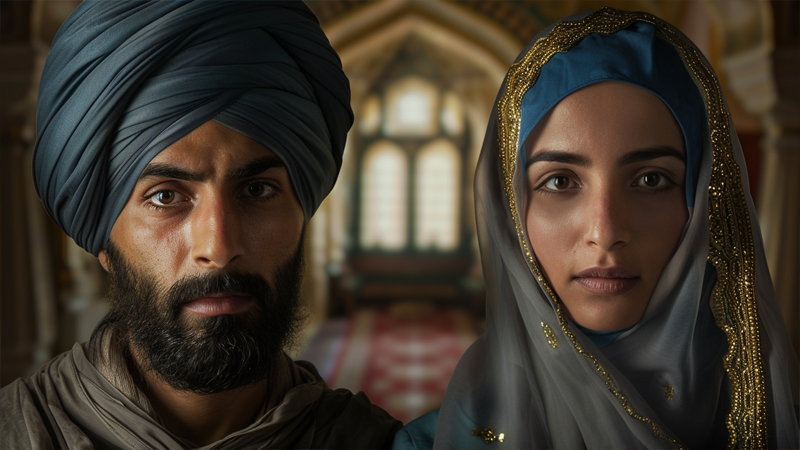
I’ll never forget the day my Sikh neighbor explained how his turban represents dedication to his faith’s core values—like equality and service to others. He made it clear that it’s not just headwear; it’s a reminder to live with integrity. Meanwhile, a Muslim friend described the hijab as a mindful act of faith, reminding her of modesty and reflection of her relationship with God.
The Significance in Daily Life
For Sikhs4, the turban is often called the “dastaar” or “pag.” Keeping uncut hair (kesh) is one of the five Ks, an outward commitment to living according to Sikh principles. For them, wearing a turban isn’t merely cultural—it’s a religious duty representing honor and self-respect.
For Muslim women, the hijab is usually part of an overall approach to modest dressing. Although practices vary (some Muslim women don’t wear a hijab at all), it’s often seen as a fulfilling expression of faith. It’s tied to ideas of privacy, reflection, and personal agency.
Throughout history, both turbans and hijabs have been both revered and questioned by outsiders. Social norms and political climates sometimes shape how freely people can wear them. Nevertheless, the religious core often remains the same: a physical way to show inner beliefs.
I find it humbling how something as simple as fabric can become so deeply woven into a person’s spiritual journey. It’s a daily ritual8 that reminds them of values, traditions, and faith in a way that outsiders might overlook. If we pause to notice, we see that these head coverings reflect devotion as much as they enhance one’s wardrobe.
How are turbans and hijabs interpreted and used in modern contexts?
Today, turbans and hijabs mix tradition with contemporary flair in many settings.
Modern wearers adapt turbans and hijabs to personal style, social norms, and professional life, bridging heritage with new expressions.
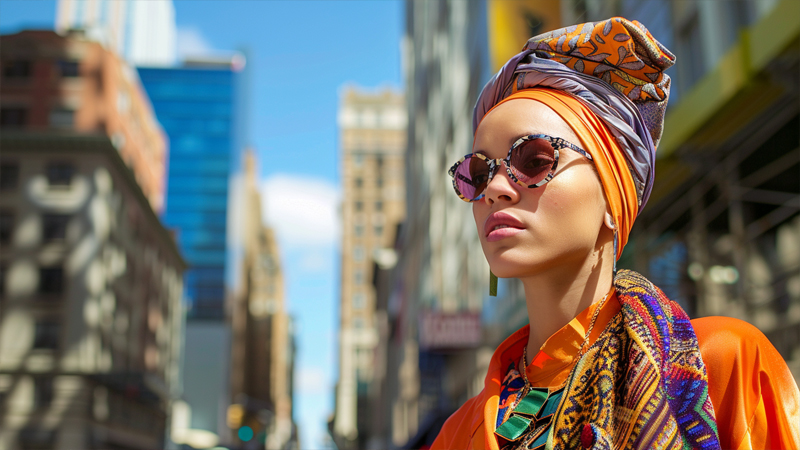
In my college days, I saw classmates turn the hijab into a fashion statement9—coordinating bright colors and patterns while still following their spiritual beliefs. Likewise, turban styles in music videos and magazines pop up, influencing global fashion trends. We see creative approaches: layered fabrics, unique prints, or minimalistic designs that match a city-chic vibe.
However, not everyone views this modern flair in the same way. Some appreciate the fresh interpretations, saying it brings their faith or culture into mainstream acceptance. Others worry it could dilute the original meaning. Sometimes a turban or hijab is worn purely for style by those who don’t belong to the faith, sparking conversations about cultural appropriation10.
Still, many wearers find empowerment in merging tradition with personal identity. They might choose a turban in place of a hijab for convenience or switch hijab styles to fit different occasions. Corporate workplaces, for instance, may see more neat, minimal hijabs that blend into business attire. Meanwhile, weddings or festivals bring out elaborate turbans with sparkling embellishments.
What interests me is how each generation reinvents these garments, weaving together respect for heritage with the freedom to express individuality. While the essence remains—rooted in faith, culture, or both—modern contexts open new possibilities for self-expression. Ultimately, it shows how these age-old traditions can evolve and still retain their deep meaning.
Conclusion
They share layers of history and faith, yet each stands uniquely as a symbol of identity and personal expression.
-
Explore the rich history and cultural significance of turbans across different regions and communities. ↩
-
Learn about the deep-rooted traditions and meanings behind hijabs in Islamic culture. ↩
-
Delve into the rich traditions and cultural practices of Punjabi heritage. ↩
-
Understand the beliefs and practices of Sikhs, particularly the significance of wearing turbans. ↩ ↩
-
Learn about various forms of religious expression through clothing and their cultural significance. ↩
-
Learn about the diverse styles of hijabs found in Southeast Asia and their cultural significance. ↩
-
Discover the unique features and cultural importance of the Nihang Sikh turban. ↩
-
Explore how daily rituals, like wearing turbans or hijabs, shape personal identity and beliefs. ↩
-
Investigate how modern wearers are transforming hijabs into fashion statements while respecting tradition. ↩
-
Understand the concept of cultural appropriation and its implications in the fashion industry. ↩

